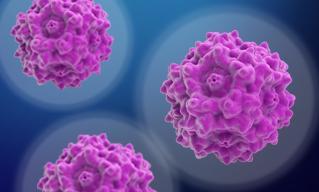 Sarepta is working hard to develop precision genetic medicines for patients with rare diseases who often have limited or no treatment options, including Duchenne. Clinical trials are critical for understanding the safety and effectiveness of our investigational medicines. The results of these studies are shared with the medical community through medical meetings, scientific journals and other forums, and are used to seek FDA approval. Ultimately, the data generated from these trials helps inform physicians, patients and caregivers making critical decisions about how to treat the disease and are also used by payors to make decisions regarding insurance coverage.
Sarepta is working hard to develop precision genetic medicines for patients with rare diseases who often have limited or no treatment options, including Duchenne. Clinical trials are critical for understanding the safety and effectiveness of our investigational medicines. The results of these studies are shared with the medical community through medical meetings, scientific journals and other forums, and are used to seek FDA approval. Ultimately, the data generated from these trials helps inform physicians, patients and caregivers making critical decisions about how to treat the disease and are also used by payors to make decisions regarding insurance coverage.
As the field learns more about rare diseases and the number of experimental therapies increases, it’s important to understand what measures are being used to determine whether a potential new medicine is working and what side effects may be associated with treatment.
For Duchenne muscular dystrophy (DMD), one of the important areas of investigation is the replacement of dystrophin, a critical protein that is missing in people living with Duchenne. The absence of dystrophin is caused by a genetic mutation, and over time the muscles in the body become weak and damaged. The condition is eventually fatal.
The progressive nature of Duchenne is associated with different symptoms at different stages of the disease. This can include early difficulty with standing and walking, and in the later stages, deterioration of heart and lung muscles, which causes life-threatening complications.
“One of the challenges of studying potential treatments for Duchenne is the selection of criteria to measure the effectiveness of the treatment. While the disease itself follows a consistently linear trajectory, the effects of the disease impact patients differently at different points in time,” said Teji Singh, M.D., Sarepta’s vice president of clinical development. “By looking at a combination of biomarkers and functional measures, we aim to understand the treatment’s impact on the trajectory of Duchenne in a way that is consistent over time.”
Biomarkers are measurable indicators of a biological process or response to a therapy, such as the ability for the heart to pump blood through the body. Functional measures, include activities such as walking, running, sitting up or down, climbing up or down stairs, raising arms, or gripping an object with a hand.
Here’s a closer look at some of the methods and measures used to assess investigational treatments for Duchenne:
Biomarkers
Metric | What It Tells Us | How It’s Measured |
|---|---|---|
| Dystrophin An essential protein for muscle strength. Duchenne is a caused by a genetic mutation that prevents the production of dystrophin. | Whether the dystrophin protein is being produced in the targeted muscle | A muscle biopsy is used to measure the production of a protein. Given the invasive nature of this assessment, several tests are used to analyze the tissue and whether an investigational treatment reached the right place in the tissue and whether the treatment is having the intended effect: • A western blot analysis is used to detect protein (dystrophin) in a patient’s muscle by evaluating the size of the protein and measuring expression, which is the percentage of dystrophin seen in the patient’s muscle relative to a normal level • Immunohistochemistry (IHC) is used to measure the percentage of a patient’s muscle fibers that contain dystrophin, and the intensity, which is how much dystrophin is present in each muscle fiber |
| Creatine Kinase (CK) CK is an enzyme released into the blood when there is muscle damage. High levels of CK is one of the earliest indicators of Duchenne. | Reduced CK levels in ambulatory patients may indicate less damage to muscle membranes, suggesting the therapy is having an effect. CK levels may fluctuate based on activity levels, such as exercise. | Blood tests are used to measure how much CK is in a patient’s blood |
| Cardiac biomarkers As Duchenne progresses, it eventually affects cardiac muscle. | • Researchers are exploring how well-characterized cardiac markers like hematocrit, creatinine, troponin, or B-type natriuretic peptide (BNP) could point to the start of cardiac involvement in Duchenne or give insight into the potential cardiac effects of treatments in clinical drug trials for boys with DMD. • Images of the heart can show if there is fibrosis, or scarring in the heart muscle. | Blood tests are used to determine the presence of these biomarkers. MRI (magnetic resonance imaging) can be used to look at the heart and see if muscle damage is taking place. |
Functional Measures
* applies to ambulant individuals only (those who can still walk on their own)
Metric | What It Tells Us | How It’s Measured |
|---|---|---|
| North Star Ambulatory Assessment (NSAA)* | How several motor skills are affected by Duchenne and by therapeutic treatment | • A 17-item rating scale used to see if a child is able to perform a range of functions, including: standing, walking, ascending and descending from standing to a seated / laying down position, sitting up, standing on heels, standing on one leg, and running. Performance evaluations include measuring the length of time it takes to perform a motor function – to rise, climb stairs, walk and run |
| Six-Minute Walk Test (6MWT)* | How the ability to walk and maintain pulmonary function are affected by Duchenne and by therapeutic treatment | • An assessment of completing as many laps on a track as possible in six minutes |
| 10-meter Walk/Run Test* | How the the ability to walk or run are affected by Duchenne and by therapeutic treatment | • An assessment to evaluate a range of specific ambulatory functions performed while walking or running a distance of 10 meters |
| Supine to Stand* | How the ability to rise from a horizontal, laying down position in varying elevations and surfaces are affected by Duchenne and by therapeutic treatment | • A measure of specific ambulatory functions performed, including ability to rise from the floor and furniture in a horizontal (laying down, face up) position, with and without assistance, and on several types of surfaces |
| Ascending Four Stairs* | How the ability to maintain balance and climb stairs are affected by Duchenne and by therapeutic treatment | • An assessment to evaluate a specific range of lower extremity ambulatory functions related to climbing stairs, including ascending varying step heights, climbing with and without a railing, velocity and time to climb |
| Sit to Stand* | How the ability to stand from a sitting position is affected by Duchenne and by therapeutic treatment | • An assessment to evaluate specific ambulatory functions related to standing upright from a seated position, including the speed and quality of motion, type of footwear worn, time to rise, use of chair / arm rests of a chair, starting position, back touching back of chair |
| Manual Strength Measures | How muscle strength is affected by Duchenne and by therapeutic treatment (there may be variances by age) | • An assessment of quantitative muscle strength in the upper extremities, including the range of motion (ROM) of shoulders, arms, joints, wrists and hand function (finger pinch, hand grip, etc.) |
| Pulmonary function How well the respiratory system, including the lungs, are working | Whether the therapy slows the decline in pulmonary function (such as breathing) caused by Duchenne | • Spirometry tests measure how much and how quickly a patient inhales and exhales • Forced vital capacity (FVC) is the total volume of air a patient breaths out when lungs are filled as deeply as possible. • Peak cough flow (PCF) measures how hard a patient is able to cough • Maximal inspiratory pressure (MIP) is how strong a patient’s respiratory muscles are when they take a deep breath • Maximal expiratory pressure (MEP) is how strong a patient’s respiratory muscles are when they exhale |
While there is more to learn about how we can evaluate investigational therapies for Duchenne, these biomarkers and functional measures provide meaningful insight into how investigational therapies may improve current standards of care and quality of life for people living with Duchenne.
Useful links
- Learn more about Duchenne muscular dystrophy
- Learn more about the importance of dystrophin
[Sources]
https://www.ncbi.nlm.nih.gov/pmc/articles/PMC6698889/
https://n.neurology.org/content/78/1_Supplement/P04.085
https://www.fda.gov/files/BIOMARKER-TERMINOLOGY--SPEAKING-THE-SAME-LANGUAGE.pdf



